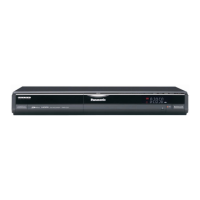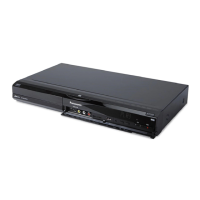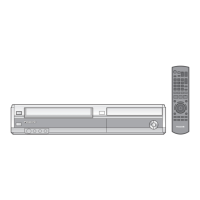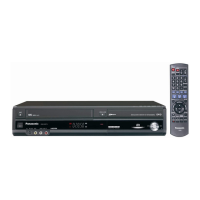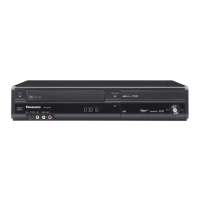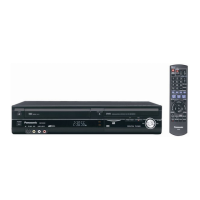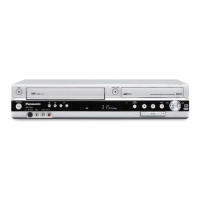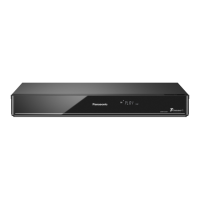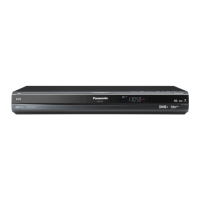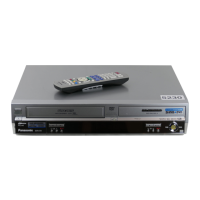You can connect this unit to a TV using the audio/video (AV) cable (included), S Video cable (not included) or
component cables (not included) instead of the 21-pin Scart cable (➔ 8, 9, 54).
Using an Audio/Video Cable (included)
AV OUT
AV1
(
TV
)
XT
)
AV OUT
AV1
(
TV
)
XT
)
Rear of TV
Rear of this unit
S VIDEO
IN
AUDIO IN
R L
VIDEO
IN
Red White Yellow
Red White Yellow
AV OUT
Using an S Video Cable (S Video Cable
not included)
The S VIDEO OUT terminal achieves a more vivid
picture than the VIDEO OUT terminal. (Actual results
depend on the television.)
AV O U T
AV1
(
TV
)
XT
)
AV O U T
AV1
(
TV
)
XT
)
Rear of TV
Rear of this unit
AUDIO IN
R L
VIDEO
S VIDEO
IN
Red White
Red White
IN
AV O U T
S Video cable
(not included)
Audio/video cable
(included)
Leave the yellow
cable unconnected.
Using Component Cables (Component Video Cables not included)
The COMPONENT VIDEO OUT terminals on this unit can be used for either interlace or progressive output (➔ 72)
to provide a purer picture than the S VIDEO OUT terminal.
RF
OUT
DIGITAL AUDIO OUT
(
PCM/ BITSTREAM
)
OPTICAL
RF
IN
AV1
(
TV
)
COMPONENT
VIDEO OUT
AV OUT
AV2
(
EXT
)
Rear of TV
Rear of this unit
AUDIO IN
R L
VIDEO
IN
Red White
Red White
COMPONENT
VIDEO IN
YPB PR
AV OUT
Audio/video cable
(included)
Component video cables
(not included)
Leave the yellow cable
unconnected.
For progressive output (➔ 43)
Notes
If you have a regular television (CRT : cathode ray tube)
Use component output with progressive “Off” (Factory
setting, ➔ 50), even if it is progressive compatible, because
progressive output can cause some flickering. This is
the same for multi-system televisions using PAL mode.
•
•
COMPONENT
VIDEO OUT
COMPONENT
VIDEO IN
This unit
Progressive output
CRT
DO NOT
•
Audio/video cable
(included)
RQT8856-BDTP070306.indb55RQT8856-BDTP070306.indb55 2007/04/0417:49:352007/04/0417:49:35
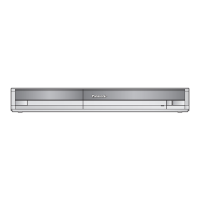
